25 Best Spring Flowers to Plant for a Garden Glow-Up
There’s nothing quite like seeing the first beautiful bloom after a weary winter! There are plenty of early spring bloomers, like snowdrops, crocuses, and glory of the snow, that’ll give you a sneak peek of the sunny seasons to come. Whether you opt for perennials that return season after season or annuals that need to be replanted each year, incorporating a mix of spring flowers into your landscaping will ensure a steady display of sprouts from early spring all the way through to the warmer summer months.
Daffodil
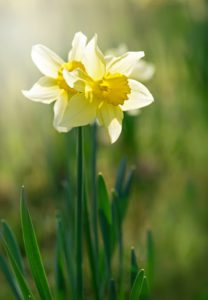
These yellow blooms are a stunning signal of spring’s arrival. Their cheerful, trumpet-shaped heads vary in size, shape, and color, including salmon, cream, and pink. The best part? Rodents tend to avoid daffodils, so they’re less likely to be dug up compared to other spring flowers. Plus, they’re very low-maintenance. Simply plant them in the fall in a sunny spot, and you’re all set!
Tulip

Tulips are another spring flower that offers a burst of color across your garden. They can be purple, pink, or white, and, if you’re lucky, have multi-flower stems and even lush double varieties! While they’re often treated as annuals due to their tendency to have a weaker bloom in the second year, they can still be grown as perennials with the right care. To keep your garden vibrant, many gardeners replant tulip bulbs each fall. However, be careful—tulips are a favorite snack for rodents. To protect them, consider planting them in pots or placing them under more rodent-resistant plants like grape hyacinth. These flowers thrive in full sun, so choose a bright, sunny spot for the best results.
Grape Hyacinth
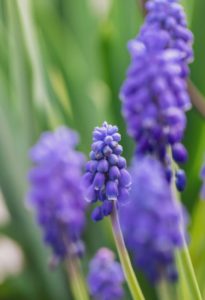
As their name suggests, this flower resembles a tiny bunch of grapes (but unlike the fruit, they can naturalize, multiplying over time to form dense, colorful patches). Even their scent is mildly sweet, much like grapes. Plant them in the fall for beautiful spring blooms, ensuring they’re placed in a spot with full sun. Consider that they’re toxic to animals, so be sure to plant them in an area that’s out of your pets’ reach.
Crocus
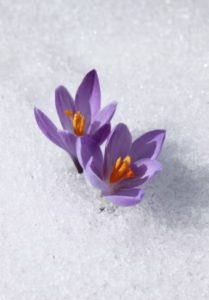
Crocuses, with their bright, cup-shaped blooms, are among the first flowers to brighten your garden in spring. You might find these sweet-smelling flowers popping up in unexpected places, like under bushes, as rodents often dig them up and replant them elsewhere! Make sure to plant them in a sunny spot in the fall for a stunning spring display.
Lily of the Valley
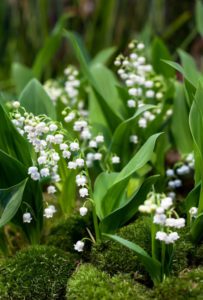
This classic perennial is known for its delicate, fragrant flowers. Its tiny, bell-shaped blooms hang gracefully on slender stems, filling the air with a sweet scent in late March to early April. While it only flowers for about three weeks, it’s a beloved addition to the garden, especially with its vibrant green foliage. As it matures, the flowers turn into small red berries. Though this plant can spread quickly and form dense clumps, it thrives in mostly shaded areas and makes an excellent ground cover. Just be sure to give it enough space to spread without crowding out other perennials.
Iris
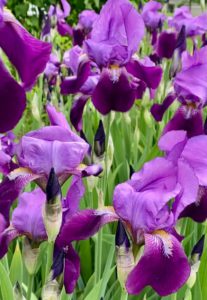
Irises, which come in many different forms and colors, have striking sword-like foliage and dramatic-looking flowers. They’ll make a beautiful statement on the garden border. Plus, they multiply and come back year after year. The shortest varieties bloom as early as mid-March, but taller irises bloom from mid-May to June. As for planting, don’t bury them too deep as their rhizomes need to be close to the surface (about three inches deep). Irises will thrive in full sun exposure. Also, they attract bees and hummingbirds but are toxic to humans and pets, so enjoy them outside and don’t think about decorating your cake with them!
Forsythia
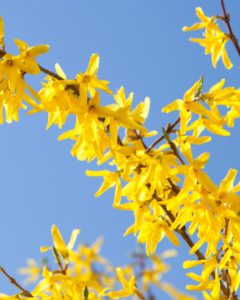
The brilliant yellow of forsythia is enough to bring a cheerful blast of color to any garden as the springtime starts. They low-maintenance and fast-growing shrubs will start blooming in early spring, but are best planted in the fall in full sun. While some varieties will grow to be just a few feet tall, most can grow up to ten feet long with arching stems—perfect for the butterflies and bees that love them. You can even cut the flower stems to make beautiful arrangements!
Azalea
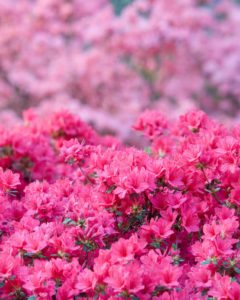
They’re one of the most popular flowering shrubs for a reason! Just look at the blazing, bright pink petals. You can also find the trumpet-shaped flowers in lavender, white, salmon, and red. But no matter the color, they’ll be an attractive addition to your porch or yard when used as hedging, a potted plant or even spread throughout your landscape. Plant them in the spring or fall, but be sure they get partial shade. You should also note that they’re toxic to you and your pets.
Lilac
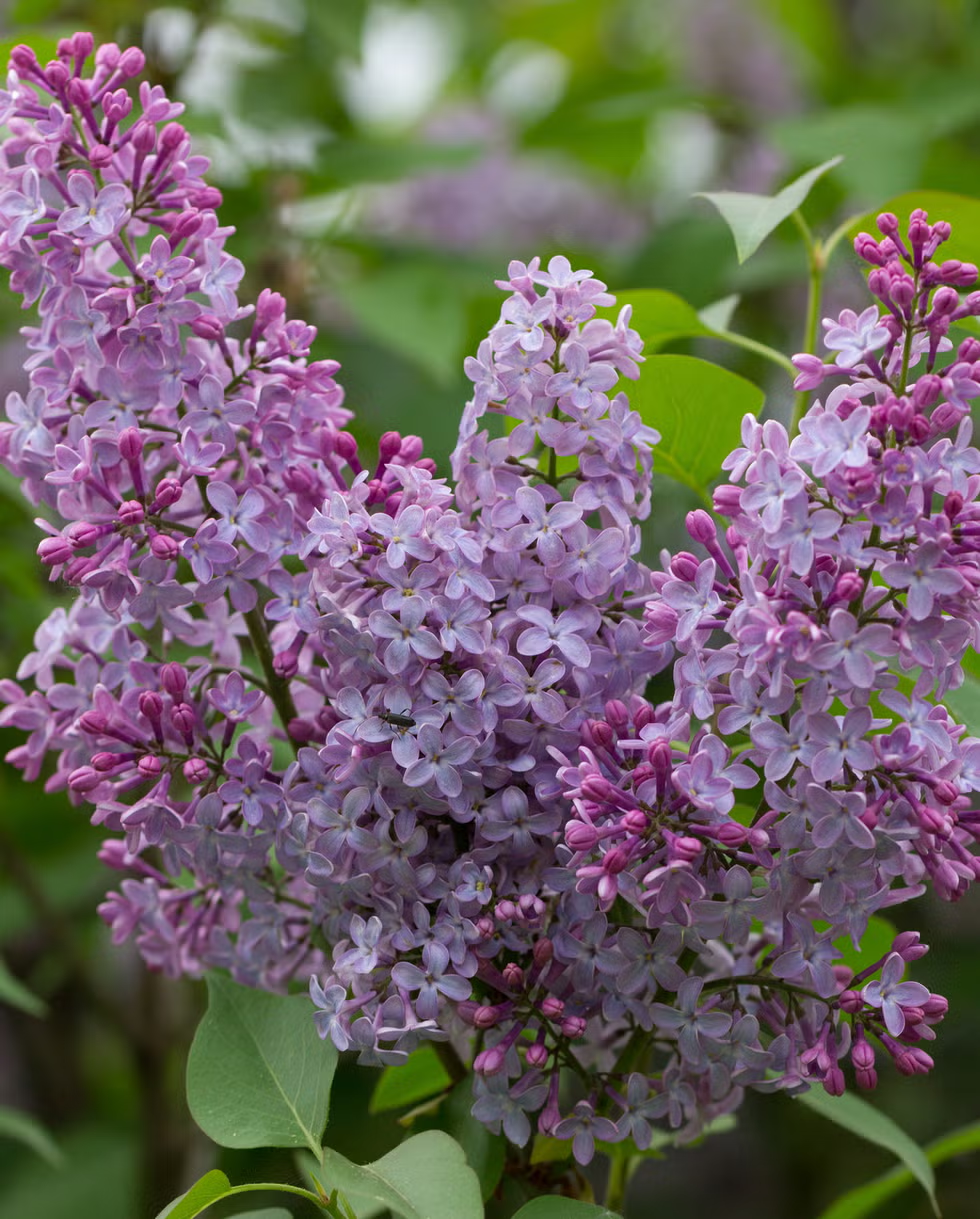
The cone-shaped clusters of four-petalled flowers that make up lilacs instantly remind us of magical cottage-style gardens. What’s even more magical? They’re exceptionally hardy, low maintenance, and long-lived. Choose from shades of white, purple, pink, blue, or yellow, then plant them in early spring or in the fall before it freezes—in a place that gets full sun. Because they’re excellent pollinator flowers, the fragrant blooms will likely bring buzzing bees to your yard come springtime.
Magnolia
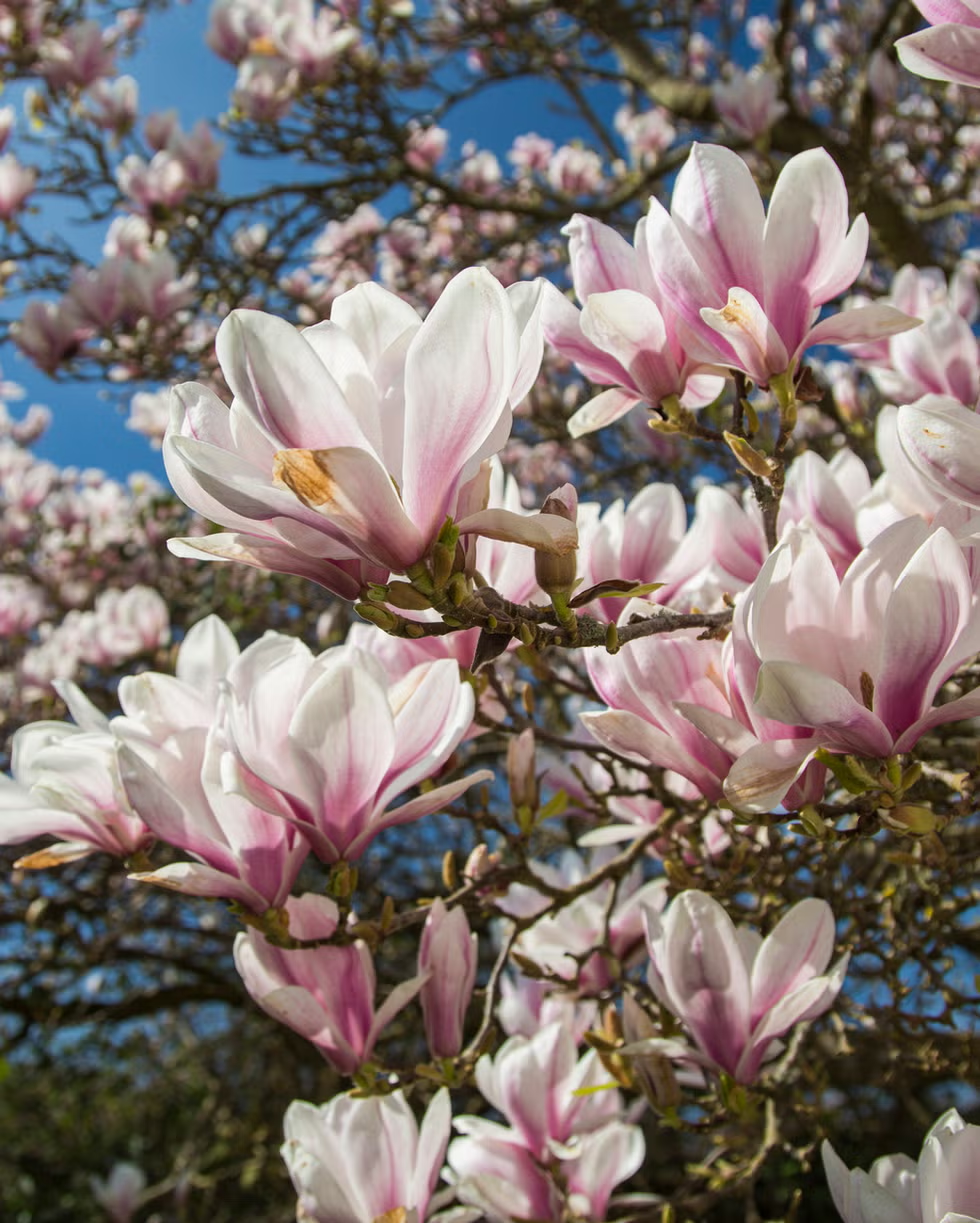
Depending on the variety, magnolias can bloom from late winter to mid-spring. So, if you want a head start to the season, look to these trees for their big and beautiful blossoms. You’ll find a variety of types, including both evergreen and deciduous, so be sure to choose one that will thrive in your hardiness zone. Because they’re wide-spreading, you’ll also want to choose a spot in your yard that has plenty of space for their branches and flowers to take shape.
Diascia
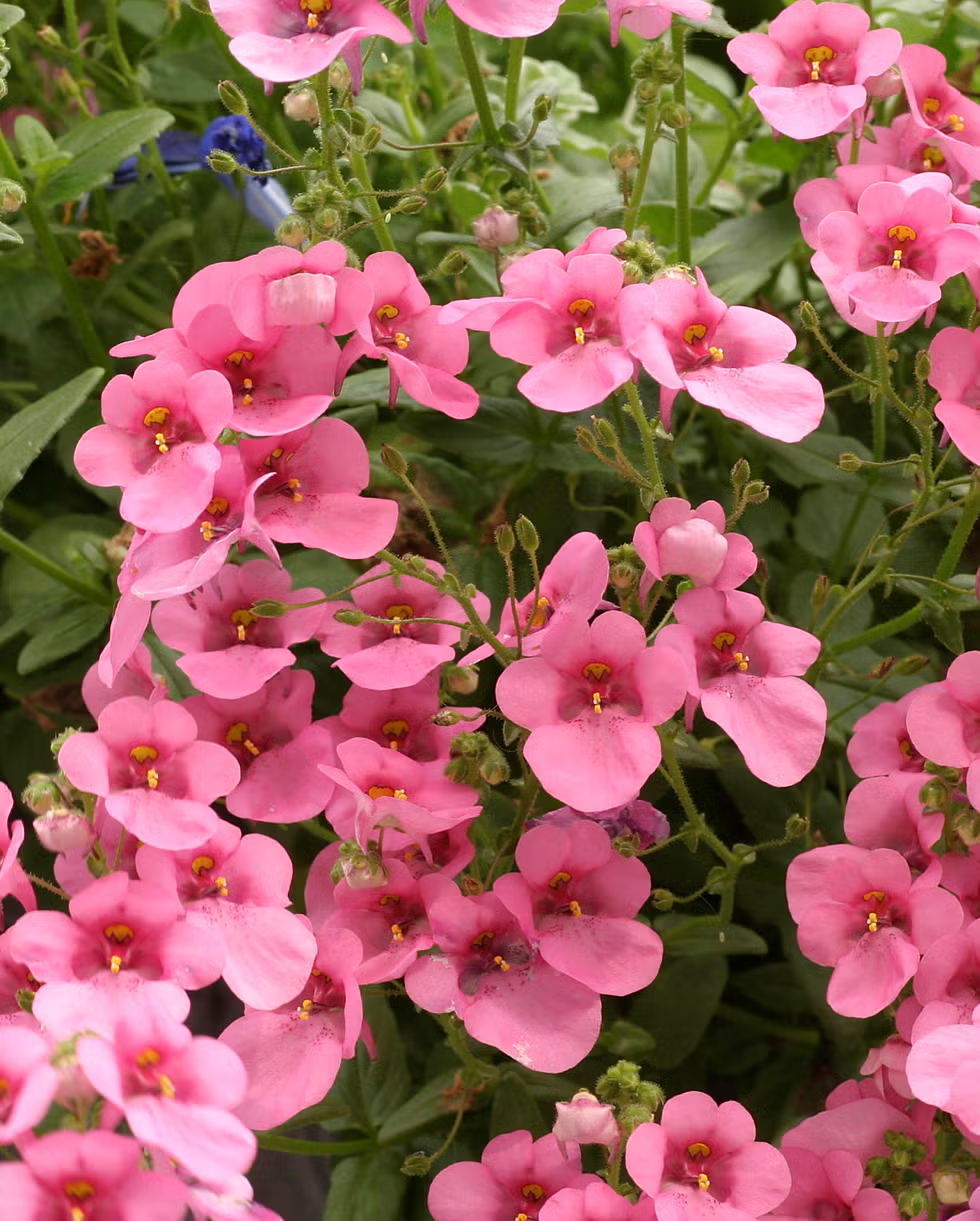
These delicate flowers are perfect for using in hanging baskets because of their trailing growth habit. They come in a variety of pretty pink shades, including mauve, rose, and coral, and flower nonstop from late spring into the autumn.
Snowdrop
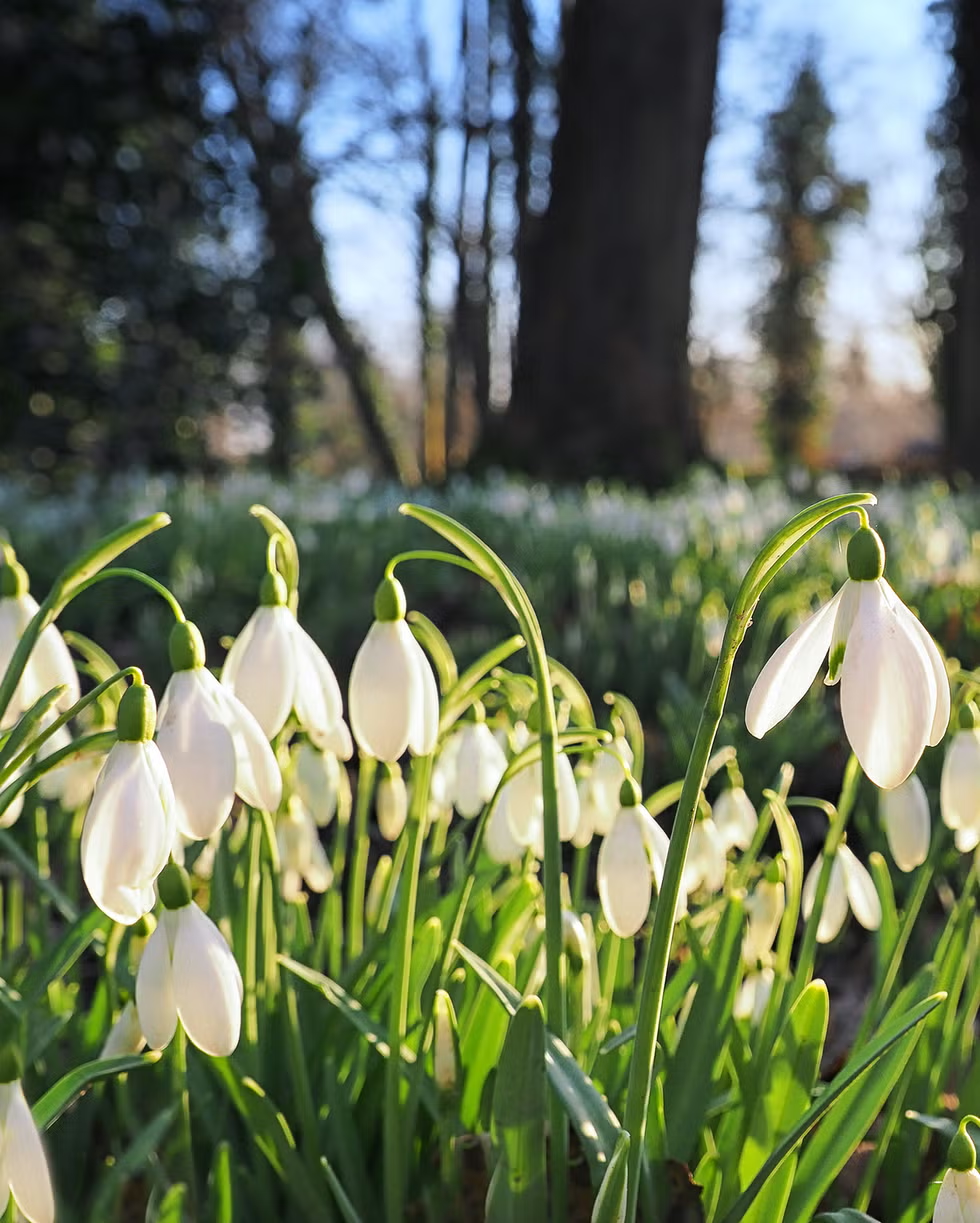
This cheerful flower is one of the first to bloom in the spring. It’s extremely easy to care for and can be planted in a variety of places in your yard. Plant snowdrops in early to late fall, depending on where you live.
Wallflowers
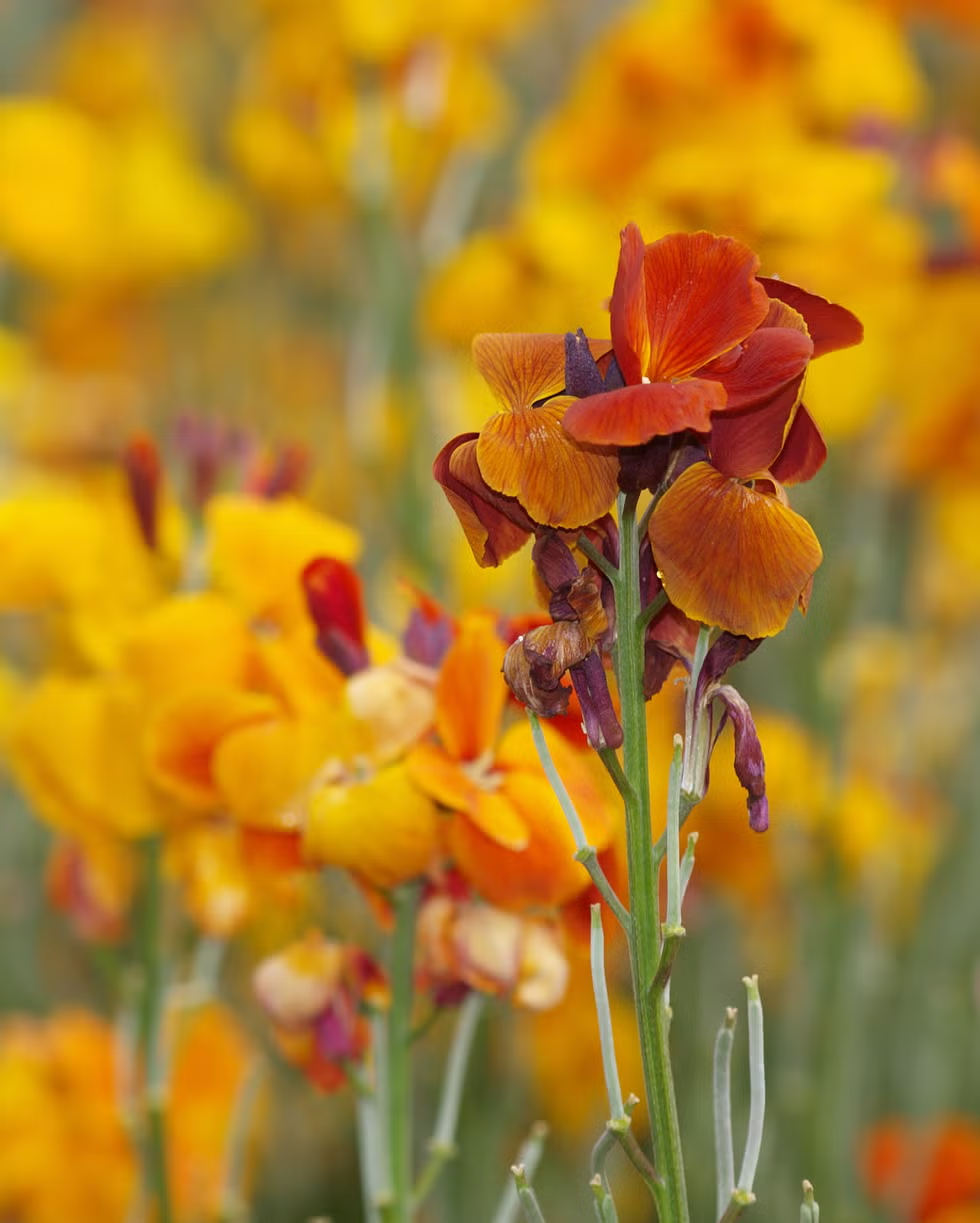
These fragrant blooms are easy to grow and would make great additions to any garden. Plant them 10 to 12 weeks before the last frost in your area, in a sunny position with well-draining soil.
Bluebells
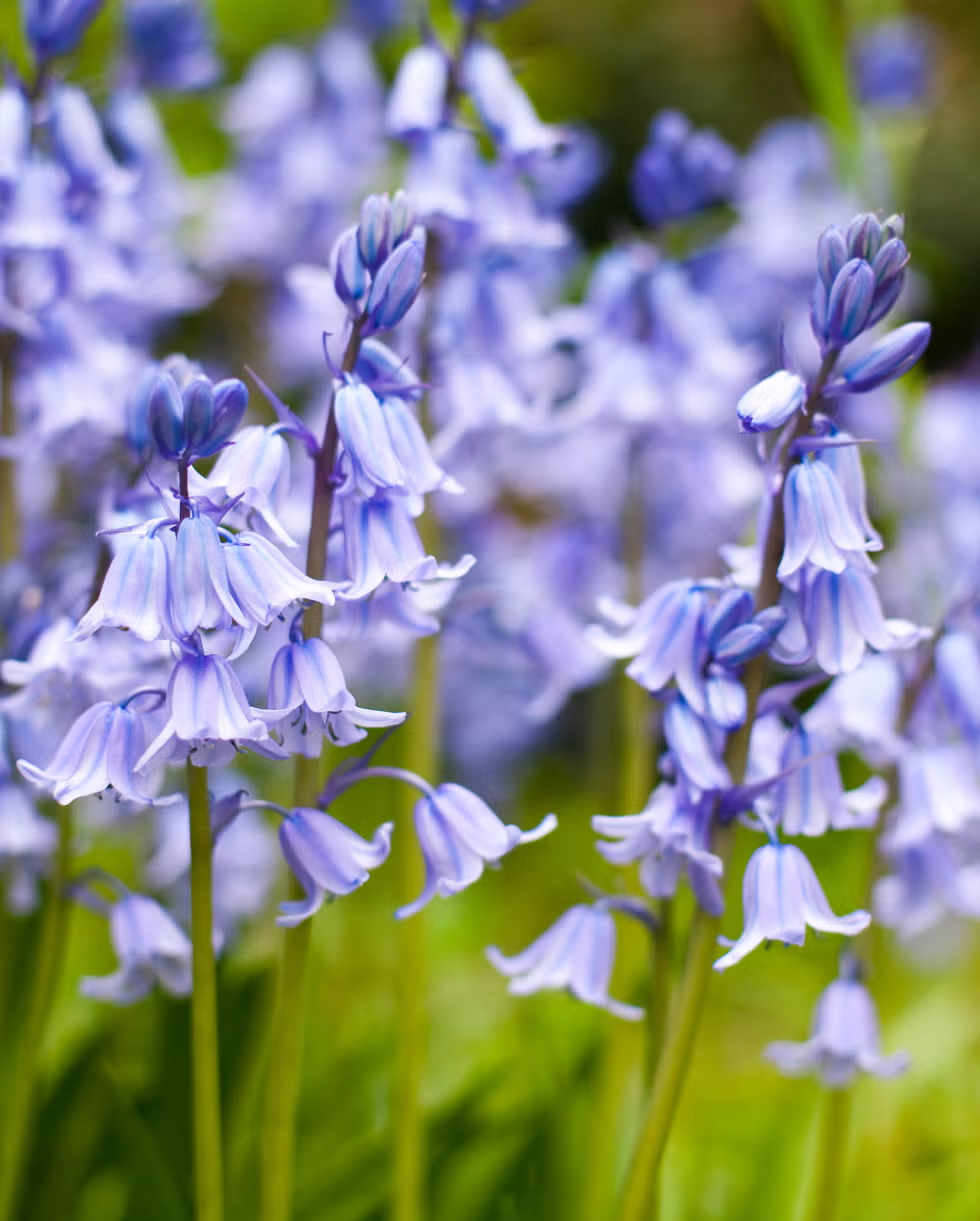
You know spring is in full swing when you see these pretty blue-violet flowers in full bloom. In addition to beautifying your garden, they also make great cut flowers.
Forget-Me-Nots
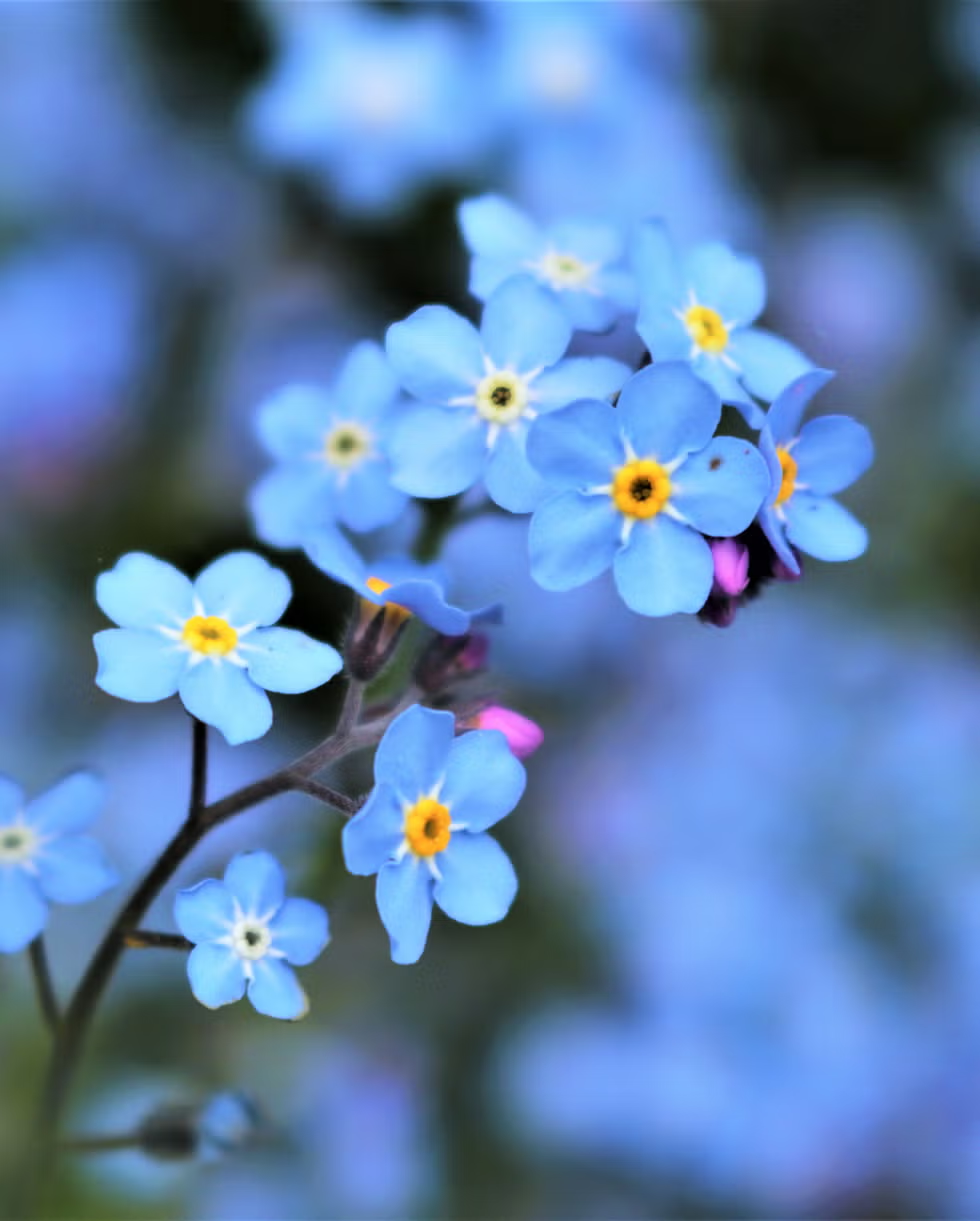
These sweet blue blooms spread on their own and will grow fast in your garden. They’re also known for attracting butterflies, only adding to their beauty!
Foxglove

This striking plant grows tubular pink, white, or purple blooms with colorful speckles, making it a standout in any garden. They usually don’t flower until their second year but they’ll be well worth the wait!
Peonies
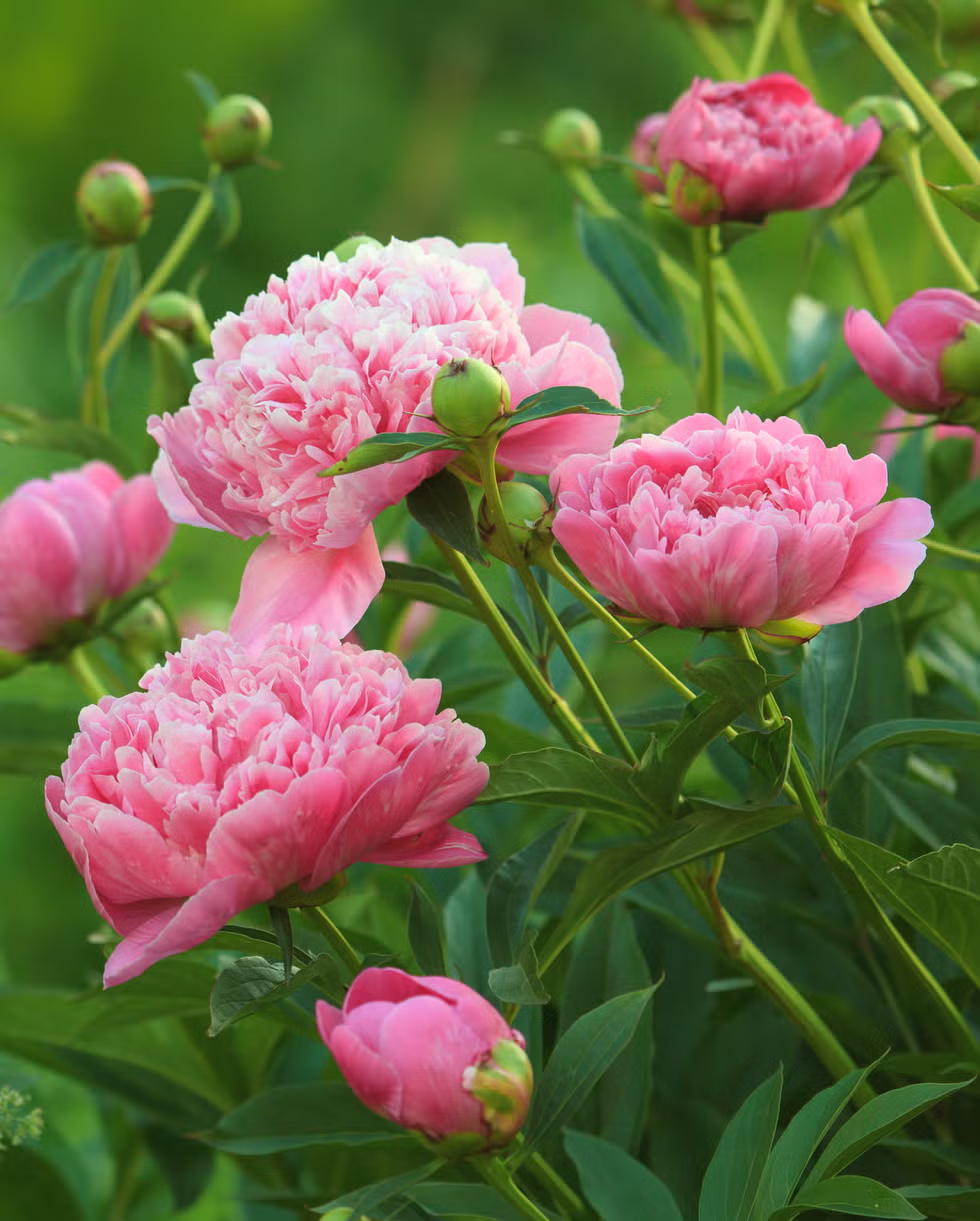
These spring bloomers are known as the “queen of flowers” in their native China, and it’s easy to see why. With their beautiful scent and showy blooms, they’re sure to be the stars of your garden.
Columbine
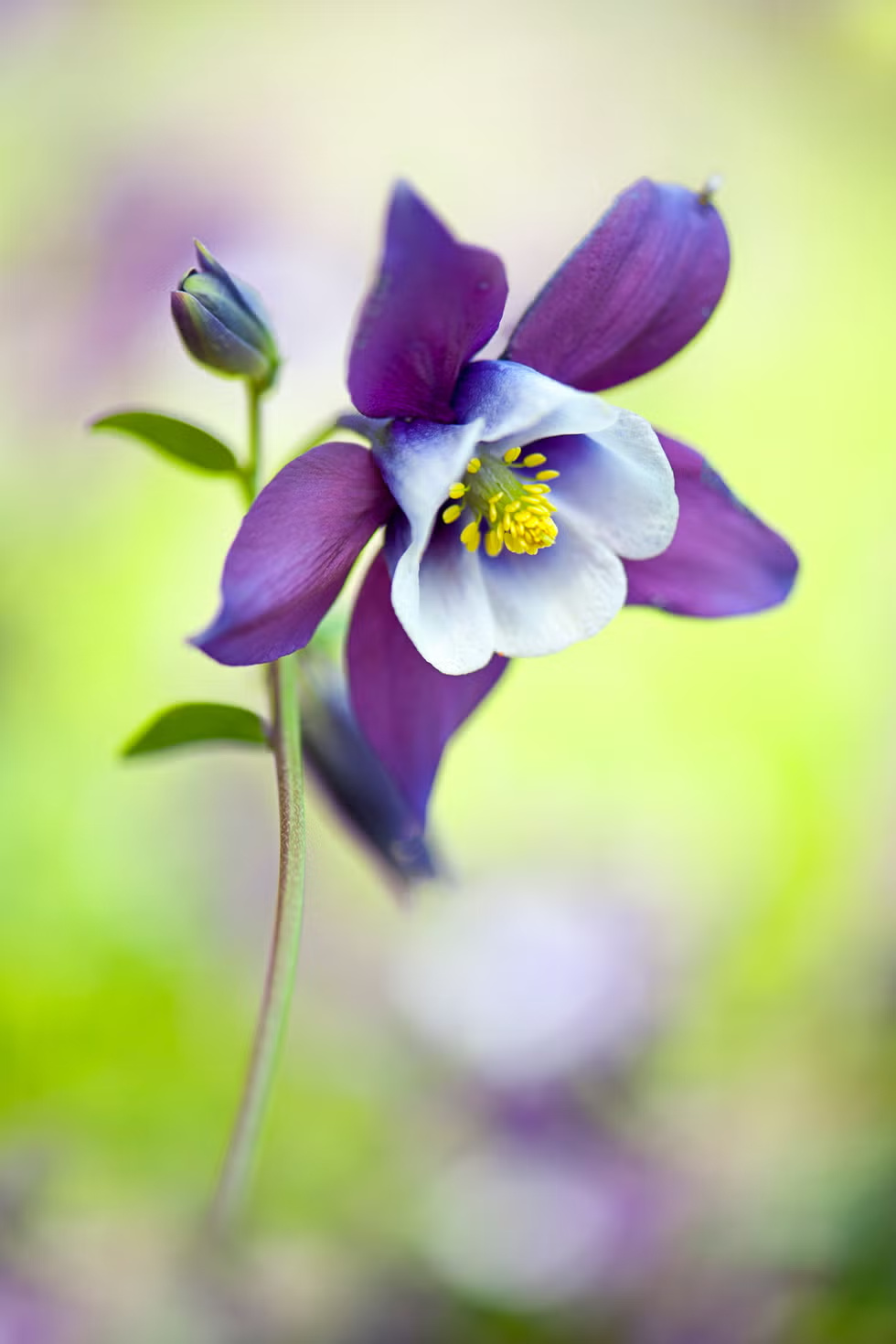
Unusual flowers and delicate foliage make this perennial a must-have for a garden in late spring. Columbines are available in many different exotic-looking forms and saturated colors including pink, purple, coral, and red. They thrive when given part sun.
Snowflake
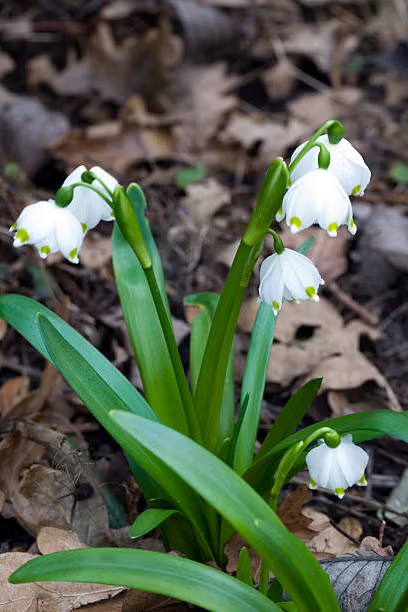
These plants, also called leucojum, bloom profusely. They have a wispy, baby’s breath-type effect and will naturalize well. They’re also pest-resistant and tolerate a wide range of soils and exposures. They like part shade to full sun.
Flowering Quince
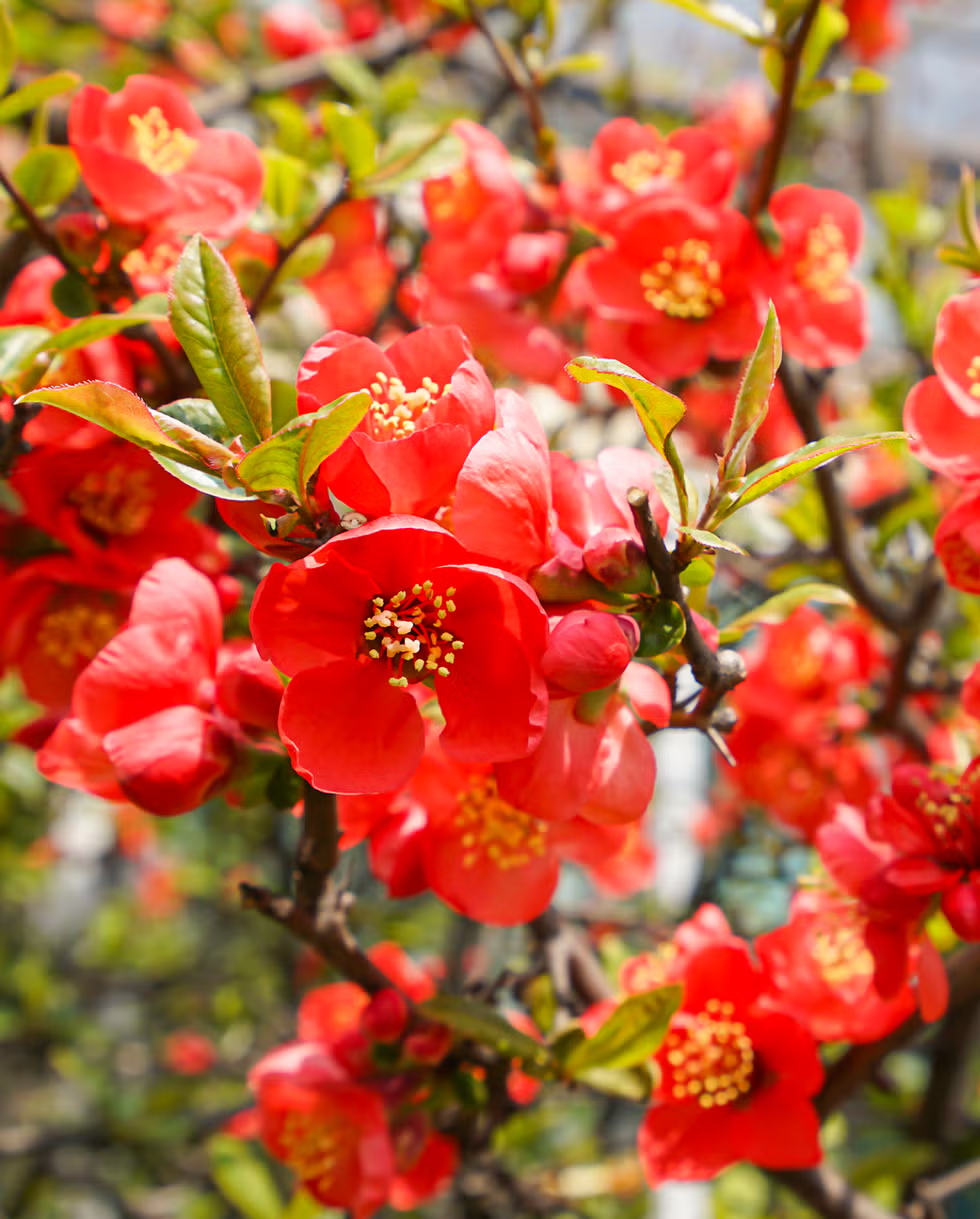
This flowering shrub boasts beautiful red, orange, white, or pink flowers that bloom for about 10 to 14 days and are followed by tiny fruits that can be used in jellies. Any plant that can go from beauty to fruity is amazing!
Pansy
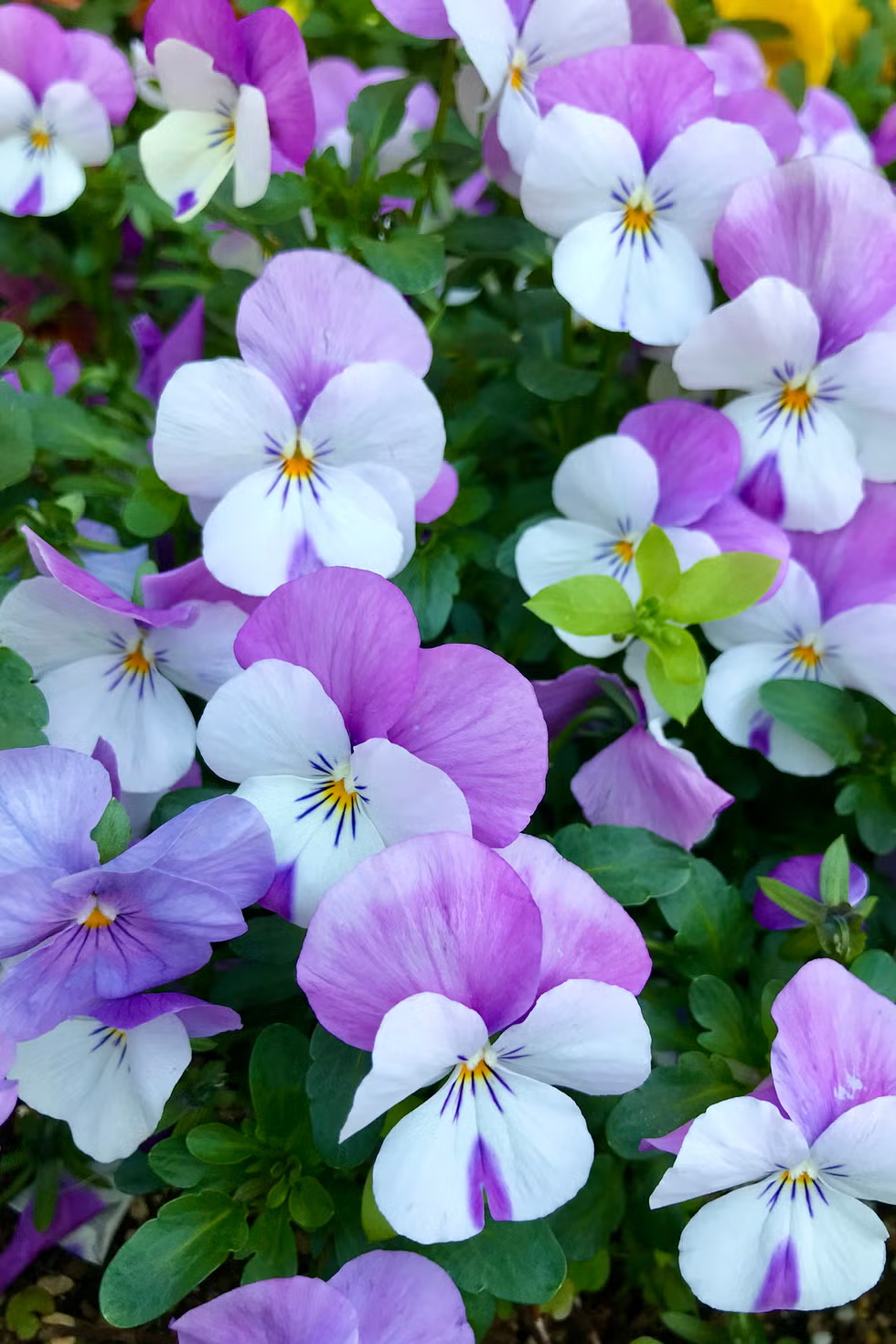
These charming annuals come in every shade of the rainbow from bright yellow to deep crimson. They don’t mind a little cold (or even a little snow), so they provide gorgeous pops of color early in the season. Pansies don’t like heat, so they tend to fade once summer arrives. Some varieties may even revive in the fall! Place them where they’ll get sun at least six hours a day.
Primrose
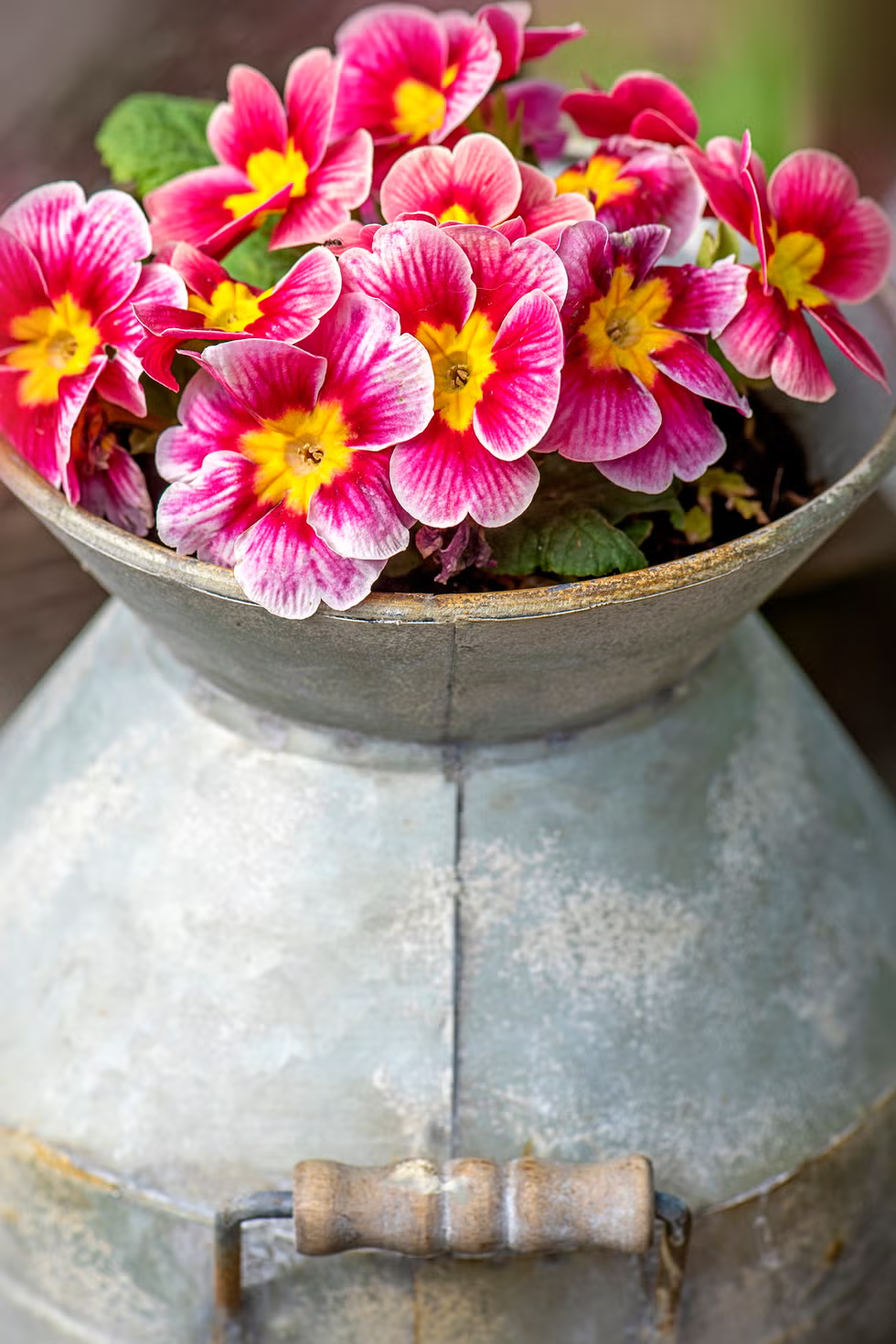
These charming perennials are some of the earliest to bloom in spring. Though they appear delicate, they’re actually extremely hardy against the cold. There are hundreds of species of primroses, so look for one that will survive winter in your area. This type of flower will tolerate part sun.
Lenten Rose
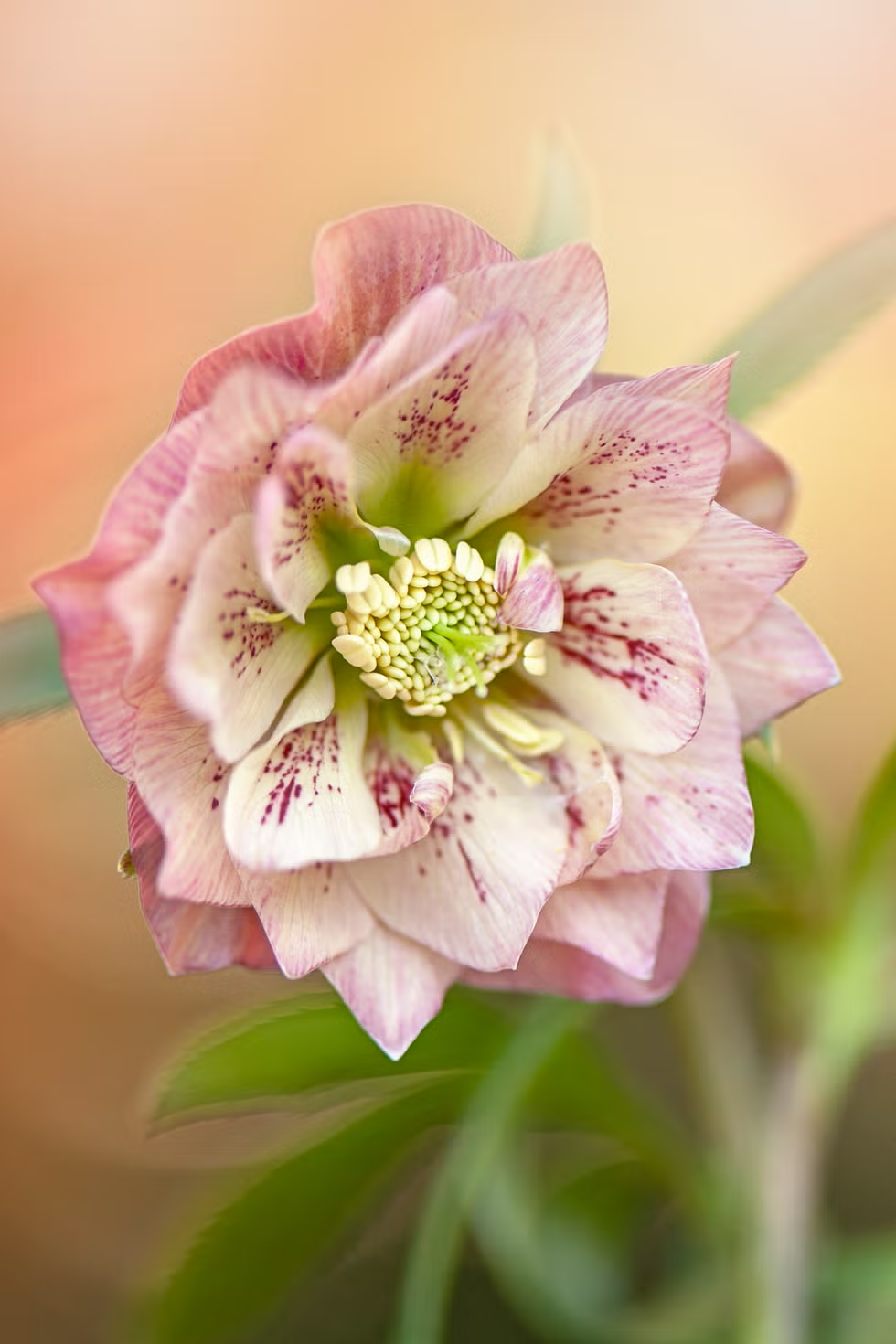
These stunning perennials, also called hellebores, appear in late winter or very early spring. Their frilly ethereal blooms appear fragile, but they’re very tough plants with long bloom times. Give them a few years to really show their beauty. In time, they’ll spread to become a gorgeous ground cover. When deciding where to plant them, consider that they need a place that’s mostly shaded.
Glory of the Snow
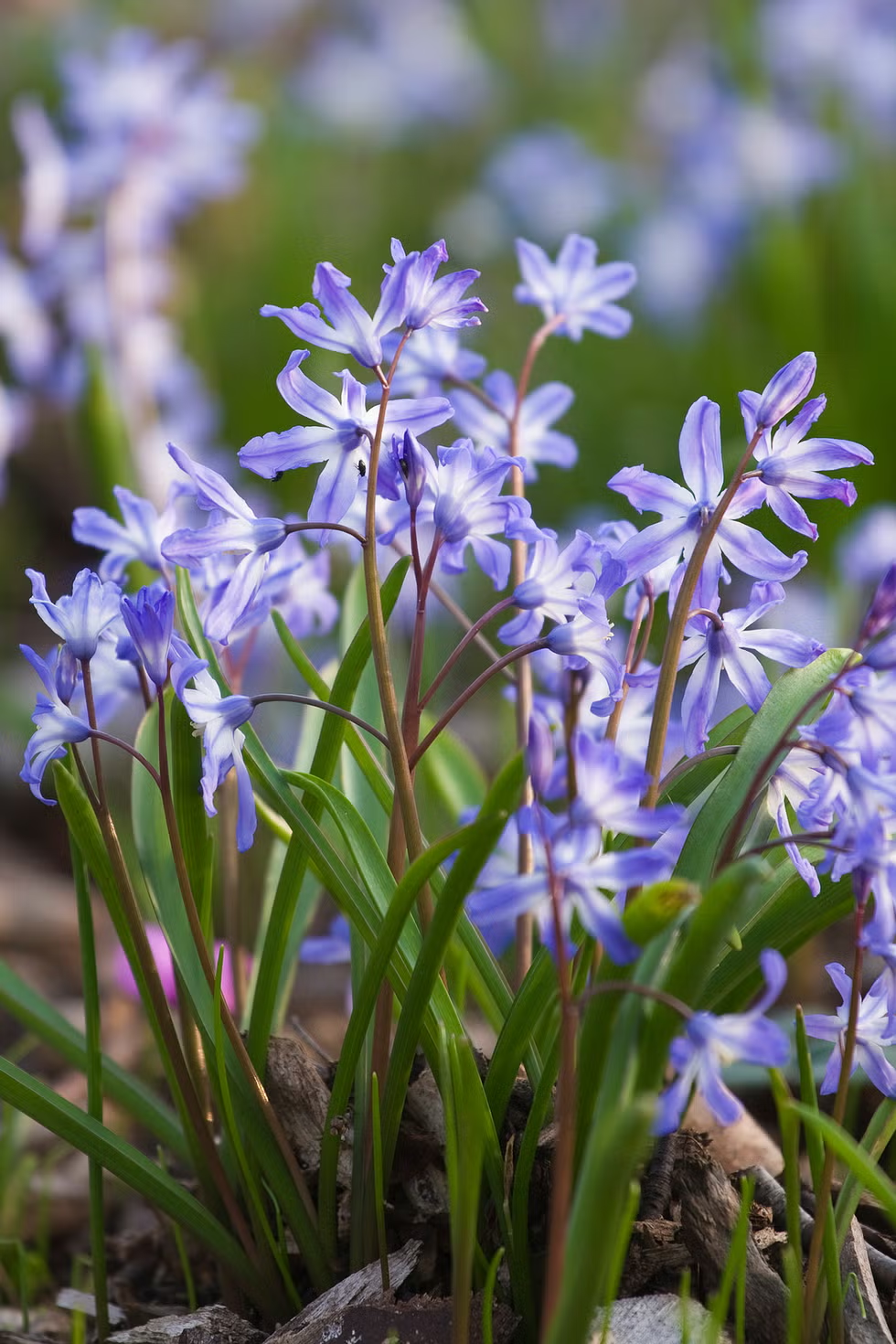
As you’d imagine, these little blue, pink or white beauties pop up in early spring when snow still may be on the ground. They look darling in rock gardens or at the edge of borders. It can be an aggressive grower, so plant glory of the snow somewhere it can’t spread too much such as up against sidewalks. They like full sun to part shade.
Lupine
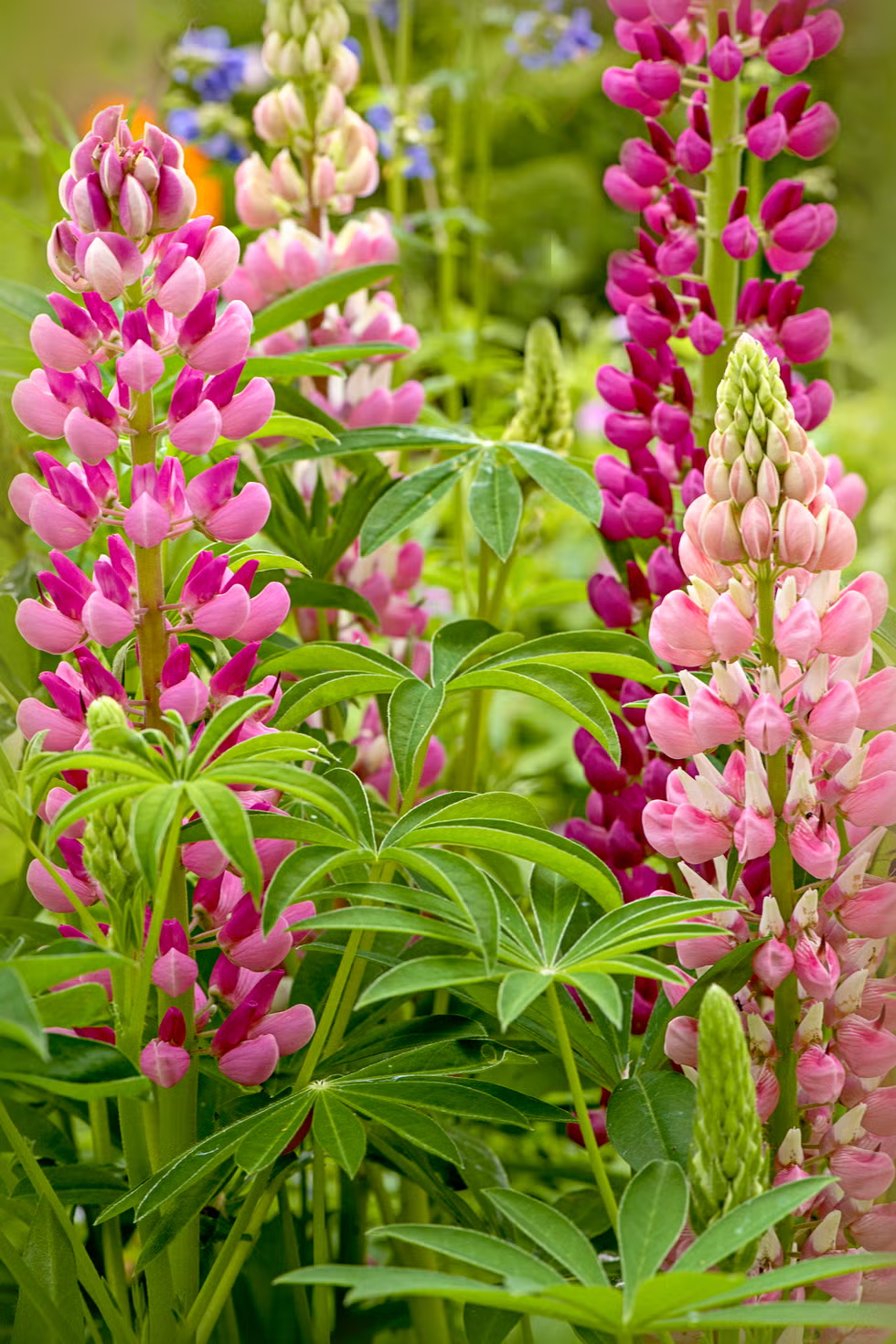
This stately perennial has tall, beautiful spikes of flowers that pollinators love. Some varieties grow up to 40 inches tall, so plant it at the back of borders. Lupines prefer part to full sun.
yogaesoteric
March 1, 2025
